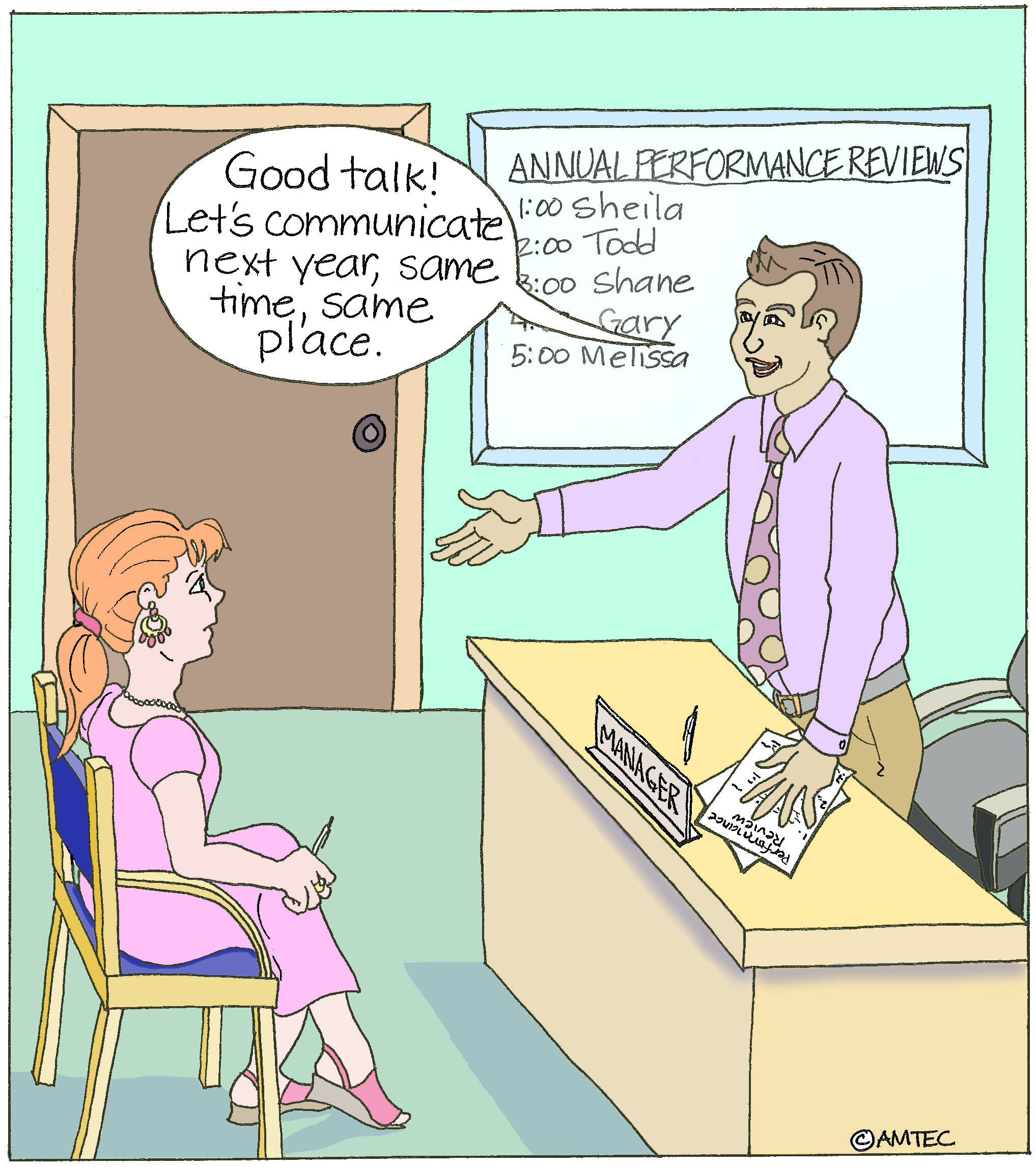To Review or Not to Review – That Is the Question.

I’d like to think that there is the perfect employee out there in the world, but in reality, no one is really perfect. Isn’t everyone’s definition of a perfect employee different anyways based on the company’s needs? We all have certain standards and expectations of our company, colleagues and ourselves and need to make sure that at the very minimum these are met. A company is only as good as its employees, right?
In order to ensure that employees are performing at their best and are continuously improving, a company should define a clear performance review process. It also forces open communication and transparency between the employee, manager and company. I think people are more likely to stick around if they feel they can talk openly about their goals and hopefully the company will do its best to support them in their development.
Companies usually have a yearly review with each employee and that’s about it. As the year progresses, important new projects (even new responsibilities) are added, and the items discussed at the time of the yearly review are no longer a deal breaker. This is why it’s so important to constantly engage with employees.
A company can conduct quarterly check-ins and mid-year progress reviews. Check-ins can be less formal and a simple phone conversation. It doesn’t have to be a long drawn out process or looked at as another administrative task for management. These will ensure the employee has time to course-correct and to improve performance by the year-end, if needed. If the employee is a rock star, share the positive feedback with them. I feel we tend to focus on the negative and provide constructive criticism more than telling someone how well one did on a task or project. I think this helps motivate the employee to keep up the good work and continue down their path.
One thing a company should think about incorporating into its performance review process is a self-assessment. This is also very important because how an employee views him/herself can be very different than what the manager/company thinks. This also helps drive the conversation of establishing goals and development plans for the coming year.
Now that I’ve established the benefits of having performance reviews, what should an employee be measured against? This will vary across industries, but here are some general ones that can be used across all companies:
- Quality of Work
- Job Knowledge
- Attitude
- Productivity
- Communication Skills
- Organizational Skills
- Team Player
- Work Ethics
It’s also important to have a rating system to measure against that is clear and easy to understand by all parties involved. Again, this can vary across companies, but examples of some basic ones are below:
- Poor, Good, Excellent
- Unsatisfactory, Needs Improvement, Meets Expectations, Exceeds Expectations
- Below Average, Average, Above Average
Remember, a company must document these reviews. This helps all parties ensure that the information exchanged during the reviews are accurate agreed upon. One needs to provide a clear understanding of what was discussed, therefore each employee should sign off on his/her reviews. It's easier to track progress throughout the year with this paper trail as well.
An employee should never be shocked during their yearly review. If this is the case, something is broken in the process and it’s time to re-evaluate. Just like people, processes are never perfect and can be a work in progress until one makes the most sense for the company. Below are some helpful links to reference:
- http://www.performance-appraisal.com/benefits.htm
- http://smallbusiness.chron.com/advantages-disadvantages-performance-evaluation-21143.html
- http://humanresources.about.com/od/performancemanagement/qt/employee_evaluation.htm
The simple fact is that all employees at all levels of an organization like to know how they are performing so it's the company's responsibility to ensure its employees are receiving the feedback in a timely and organized manner.
- Log in to post comments

